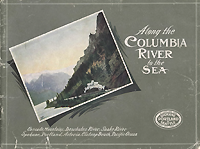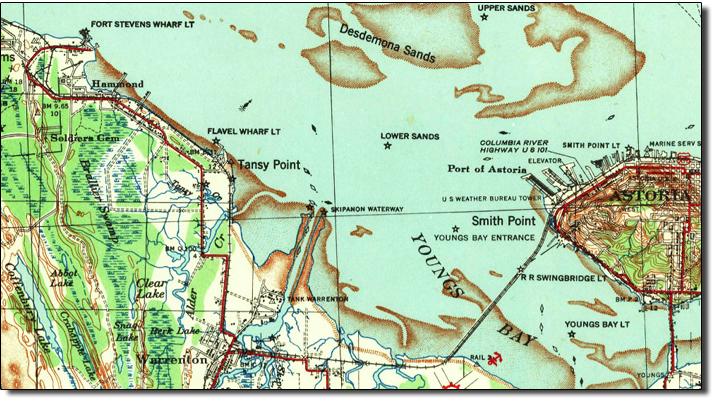|
Part of Wx4's The Past Less Traveled series----------------------------------------------------------------------- A Leviathan Roadblock on SP&S Sheldon Perry, whose links to 2000+ timetable PDF's fill a bulging page in Wx4's Historical Maps and Timetables section, recently sent us an |
|
| Railroaders refer to the collective mass of rules, regulations and instructions that govern them simply as "the rules". Some rules inexplicably take on a life of their own and survive long past the expiration of the circumstances that promulgated them. They continue to function only as historical artifacts. One of the odder examples that we have run across of the forces of inertia at work is an instruction, a.k.a. "rule" that appeared in a Spokane, Portland & Seattle Railway book of Special Instructions (what's that? explanation here). Its will to survive was so strong that not only did it outlive its operational usefulness, it survived longer than its issuing carrier. Back in 1961, as the whaling industry in this country was winding down, a joint startup project - that included among others outfit called Bioproducts Inc. and the Oregon Fur Producers Association - purchased a 95-foot trawler and commenced with whaling operations off the Northwest Coast. Their main aim was to provide low-priced animal protein for Oregon's then-prosperous mink industry, while they offered secondary whale-derived products on the open market. One customer for whale oil was National Aeronautic and Space Administration. |
|
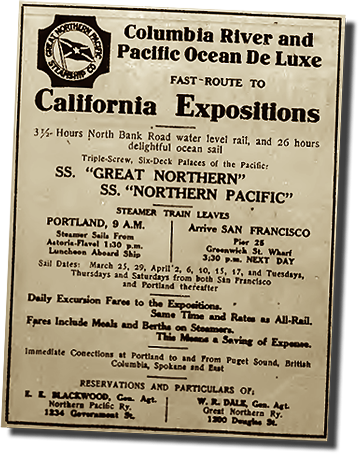 |
The operation was based at the Bioproducts plant at the location of the then already long gone town of Flavel on SP&S's Fort Stevens Branch. The pinnacle of Flavel's existence arrived in 1915, when it became the home port for Jim Hill's Great Northern Pacific two ship ocean liner fleet that steamed the lanes between there and San Francisco's Panama Pacific International Exposition. After the Exposition closed, GN tried sailings to Hawaii and other routes, with little success. Soon after America's entry into World War I, the Federal Government commandeered them as troop transports and that was that. Flavel's port economy foundered and the town was soon annexed by neighboring Hammond. The name Flavel is about all that remains of the original port. (continued further below) We don't know for certain if special trains served the Great Norther sailings, but the area had long been a summer destination for Portlanders, so there was an abundance of regular trains to take care of business. In the 1913 high season, for instance, five scheduled passenger trains each way served tourists. At other times of the year, service was dramatically curtailed, but the extent of which varied from year to year. Sometimes only few mixed trains operated in the off months; sometimes a combination of mixed trains and a pair of passenger trains. Automobiles soon made their domineering presence known, causing service to slowly spiral down. An interesting anomaly was mid-1918, when the schedule consisted exclusively of five mixed trains each way per day, presumably due to military activity at Fort Stevens. The next year the passenger trains were back, but the last pair ran in 1924. Mixed trains lasted until 1925, after which only extra freight trains remained. left - 1915 advertisement in the The Daily Colonist, Victoria, BC below, left - SP&S Fort Stevens branch schedules for late summer, 1915 during Panama Pacific International Exposition, clipped from an employee timetable; Exposition traffic was likely handled by both these and special trains. (click on image for larger version) In 1916, the steamship company still sailed from Flavel and was served by an even more extensive compliment of SP&S trains. Wx4 has a PDF copy of that summer's schedules, courtesy of Dean Ogle. further below - the Great Northern Pacific Steam Ship Company dock at Flavel during its brief bit of glory. (click on image for larger version of the Frank A. Woodfield photo at Library of Congress) below, right - A cropped version of Woodfield's photo, plus several others, apeared in a rather beautiful 43 page SP&S advertising booklet, Along the Columbia to the Sea, which is available as a PDF from Wx4 (click on the image) |
 above - the rule for dealing with deceased whales that would not die: from SP&S System Special Instructions No. 15, September 30, 1962, page 7. below - fouling the tracks, perhaps in more ways than one: Ramp in place across the tracks, Bioproducts is in mid-process of winching a second whale ashore towards its plant immediately behind the photographer - no train in sight. Photo from Pacific Northwest's Whaling Coast by Dale Vinnedge, a book in Acadia Publishing Company's "Images of America" series - used with permission. |
Bioproducts was (and still is, under the name Bio-Oregon Protein) situated just across the branchline tracks of Spokane, Portland & Seattle Railway, which ran along the bank of the Columbia River. The tracks posted a logistical problem for Bioproducts, as the economics of the whaling operation were markedly time-dependent. Once a whale was hauled aboard ship, the clock of deterioration began ticking. By the time the ship docked, time invariably was about up. There was no time nor space to flense and cut up the whale on the beach, so the only alternative was to drag the carcass from the boat across the tracks on a ramp to the plant as quickly as possible.
The railroad's worry of delaying scheduled trains had vanished with their demise more than three decades before, and SP&S likely did not want to come out as a bad guy by hindering the not particularly robust local industrial economy, so its main concern would have been safety. The issue was easily handled with a modest entry in SP&S's Portland Division Special Instructions (what's that?), reproduced at left. |
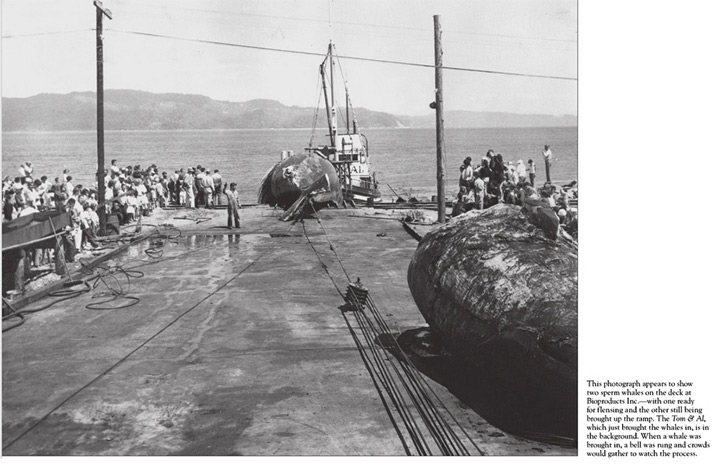 |
|
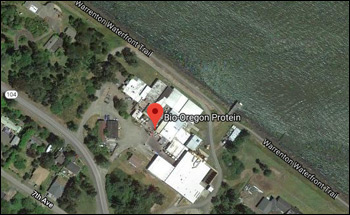
above - the Bioproducts (now Bio-Oregon Protein) plant as it appears today on Google Maps: Whale carcasses were winched from the boat directly in front of the facility. Flavel Wharf Light lies downward and to the right, beyond the image. Warrenton Waterfront Trail now occupies the old SP&S / BN right-of-way. |
By the 60's, branch speeds theoretically maxed out at 20 mph, so slowing for a possible stop short of a deceased whale did not inordinately delay things. Bioproducts spread the word to local residents about these rare events, so it is reasonable to assume that they did the same to SP&S.
During the next three years, Bioproducts harvested thirteen unfortunate leviathans before giving up the activity as a bust. In 1971, the U. S. essentially banned whaling, but the bureaucrats at SP&S, and its succeding Burlington Northern did not pick up on any of this, causing the warning to survive on the books until 1976. Flavel's railroad is now a bike path. below - the Fort Stevens Branch as it appeared in 1939: SP&S's tracks terminated at the wharf, but tracks atop the jetty at the mouth of the Columbia River extended several miles to the northwest of town. Flavel was located just above and left of the image middle. Today, Flavel wharf is gone. Click on the image for the full USGS topo map. |

